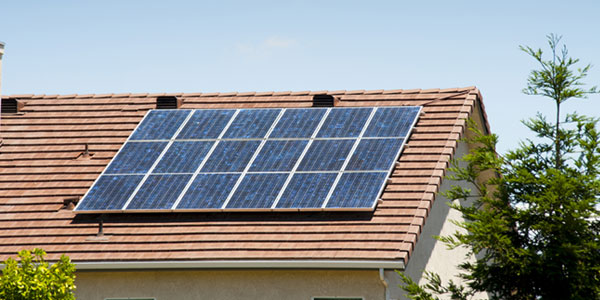Home Solar Panel Installation Tips

Bender Insurance Solutions

The demand for clean and renewable energy is growing significantly. With more installation and financing options available than ever before, utilizing solar energy has become increasingly attractive to homeowners seeking environmentally and economically sustainable ways to power their homes. Even with such potential benefits, the decision to install solar panels for your home is not one to be made lightly. Here are a few things to consider before you invest in solar power.
Should I Go Solar?
In order to determine if your home is a good fit for a solar panel installation, some key issues should be considered. First, it is important your home has a southern exposure that is not shaded by trees or other structures. You may need to remove tree limbs to provide adequate sun exposure to your solar panels.
How Do I Pay for Solar?
The switch to solar energy is a long-term investment. The upfront costs can be high, so it is important to weigh the options and determine the best way to finance the system.
If you choose to pay for your solar panels and their installation out of pocket, as an owner you may be able to reap any potential subsidy benefits of the system. There are many federal and state government-funded programs and incentives that can help homeowners reduce solar installation costs. Use the U.S. Department of Energy’s Tax Credits, Rebates & Savings website to determine savings in your state.
If you are not planning to pay the initial cost yourself, another option is a Solar Power Purchase Agreement. This is when a company will install your solar panels, typically free of cost, but retains all ownership rights to receive available subsidies and tax incentives. You, in turn, can benefit from a lower electric bill with little to no upfront costs.
Prepare Your Home for Installation
It is important to consider other home improvements that may be necessary to accommodate the solar panels and power system you choose.
Start by having your roof inspected by a professional to assess its condition and load-bearing capacity. Not every roof system can support the new load presented by the solar array, especially if there are already several layers of roofing shingles on the roof. In addition, the roof covering should have at least another 10 years left. If not, the roof covering should be replaced before installation, as solar panels are not easily moved once in place.
Next, think about remodeling plans you may have approaching in the future — particularly those involving the areas of your home where your solar panels will reside. Plan around these anticipated improvements prior to installation to help maintain the integrity of your solar power system.
Find a Qualified Installer
As with any home improvement project, you want to choose a company with the proper experience and licenses in your state. Each municipality has different laws and regulations, so it is best to contact your local authorities to learn if there are any specific licensing requirements. The installers should have at least four years of experience and they should be North American Board of Certified Energy Practitioners (NABCEP) certified. You can also search the NABCEP’s Certified Installer Locator. While not required in every state, the NABCEP provides additional certification for solar energy professionals.
You should also ask for references for those customers that have had systems installed 2-3 years ago and be sure to ask about their overall satisfaction with the installation and responsiveness to correcting issues.
Get the Right Equipment
When selecting a system, it is important to understand that a solar panel is always producing electricity when exposed to the sun or other light source. This can present a shock or electrocution hazard to firefighters, those conducting roof maintenance and others. There are several ways to properly “turn off” the electricity with the use of micro inverters and optimizers. These devices provide rapid shutdown at the solar panel in order to minimize the electrical hazard.
Also, if the system is installed on the roof, the installers need to use high-quality mounting systems, flashing and sealants to prevent water from entering your home. The systems require numerous anchors to the roof, and each one could become a potential roof leak if not installed properly with high-quality material.
If aesthetics are important to you, you may want to consider panels that mimic the look of roof shingles, windows and other architectural details for seamless integration into your home’s design. These types of panels are often preferred for cosmetic reasons, but may be more expensive and less efficient than traditional flat panel options.
Protect Your Investment
Solar energy systems are not maintenance-free, and you will need to hire a qualified solar company to perform routine inspection and maintenance. These systems are exposed to environmental conditions, such as wind and flying debris, which can put additional strain on the wiring and fasteners. The system should be inspected at least annually and repaired as needed. The industry does not recommend removing snow from solar modules as it may scratch and damage the panels, decreasing efficiency.
The installation should also be inspected from the attic, looking for any sign of staining from leaks in the mounting system. This is especially important for areas of the country that receive above-normal snowfall or in areas that may have strong wind storms. Extreme weather events can create extra stress on these attachment points and could eventually lead to water intrusion.
Once your solar panels are installed, it is important to speak with your insurance agent to help make sure the panels are included in the coverage for your home.
Taking the time to protect your investment in solar energy is the final step in creating a brighter future for the environment and a lighter energy bill for your home.



